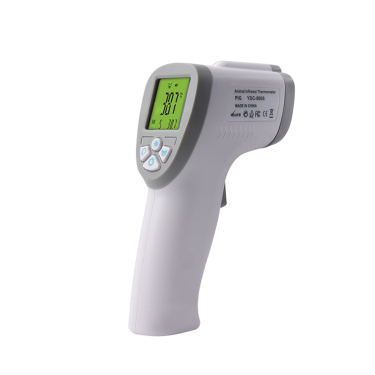
# Dog Thermometer: Essential Tool for Monitoring Your Pet’s Health
## Why Every Pet Owner Needs a Dog Thermometer
As a responsible pet owner, monitoring your dog’s health is crucial. One of the most important tools in your pet care arsenal should be a reliable dog thermometer. Unlike human thermometers, these specialized devices are designed specifically for canine use, providing accurate readings that can help you detect potential health issues early.
## Understanding Normal Dog Temperature
Before using a dog thermometer, it’s essential to know what constitutes a normal temperature range for your furry friend:
– Normal range: 101°F to 102.5°F (38.3°C to 39.2°C)
– Puppies may have slightly higher temperatures
– Temperature can vary slightly by breed and size
## Types of Dog Thermometers
### Digital Rectal Thermometers
The most accurate option for measuring a dog’s temperature. These thermometers provide quick readings and are specifically designed for pet use with flexible tips for safety.
### Ear Thermometers
Less invasive than rectal thermometers, these measure the infrared heat waves from the eardrum area. While convenient, they may be slightly less accurate.
### Non-contact Infrared Thermometers
These allow temperature taking without physical contact, making them ideal for nervous or aggressive dogs. However, they tend to be the least accurate option.
## How to Properly Use a Dog Thermometer
Using a dog thermometer correctly ensures accurate readings and keeps your pet comfortable:
– Lubricate the thermometer tip with petroleum jelly or water-based lubricant
– Gently lift your dog’s tail and insert the thermometer about 1 inch into the rectum
– Hold the thermometer in place until it beeps (for digital models)
– Clean the thermometer thoroughly after each use
– Reward your dog with treats to create positive associations
## When to Check Your Dog’s Temperature
Regular temperature checks aren’t necessary for healthy dogs, but you should use your dog thermometer when you notice:
– Lethargy or unusual behavior
– Loss of appetite
– Shivering or panting excessively
– Vomiting or diarrhea
– Before and after vaccinations
– During recovery from illness or surgery
## Interpreting the Results
Understanding what your dog’s temperature means is crucial:
– Below 99°F (37.2°C): Hypothermia – seek veterinary attention
– 103°F (39.4°C) or above: Fever – contact your vet
– 106°F (41.1°C) or above: Emergency – immediate veterinary care required
## Choosing the Right Dog Thermometer
When selecting a dog thermometer, consider:
– Accuracy: Look for veterinary-grade devices
– Speed: Faster readings mean less stress for your pet
– Durability: Choose waterproof models for easy cleaning
– Safety features: Flexible tips and temperature alarms
– Ease of use: Clear displays and simple controls
## Maintaining Your Dog Thermometer
Proper care ensures your thermometer remains accurate and hygienic:
– Clean after each use with alcohol wipes or soap and water
– Store in a protective case
– Replace batteries regularly
– Check accuracy periodically by comparing with another thermometer
## The Importance of Regular Health Monitoring
While a dog thermometer is invaluable for detecting fevers, remember that temperature is just one indicator of health. Combine temperature checks with observation of:
– Eating and drinking habits
Keyword: dog thermometer
– Energy levels
– Coat condition
– Bowel movements
– Overall behavior
By incorporating regular temperature checks into your pet care routine, you’ll be better equipped to notice health changes early and seek appropriate veterinary care when needed. A quality dog thermometer is a small investment that can make a significant difference in your pet’s wellbeing.